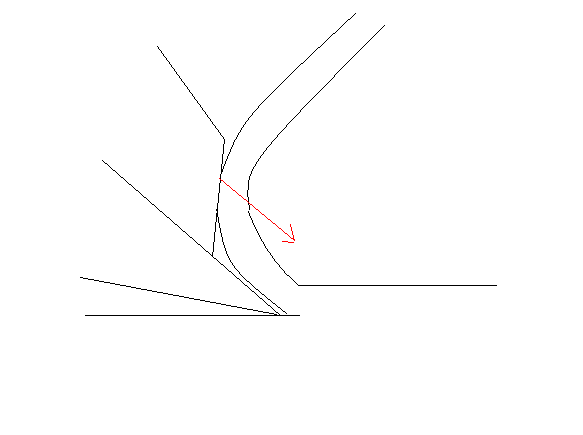And how to avoid or repair it with the help of the capiron? In laymans terms of course.
First what is tearout? When planing against the grain, you effectively drive a wedge between the woodfibers. These fibers are very strongly bonded to each other, but there comes a point where they just split apart in stead of being cut by the planeiron.
As you can see, when planing against the grain, the split tends to dive into the wood, and gives a torn spot in the surface.
When we want to avoid tearout, we will either have to reduce the wedging force of the plane iron, or somehow stabelise the wood.
The first remedy, reducing the wedging force, can be accomplished with a sharper blade. When the wood is cut before it lifts up, we avoid tearout. Another possibility is a higher blade angle. When the planing iron sits steeper in the plane, it doesn't wedge so much into the wood, but makes more of a scraping cut.
The second remedy can be reached with a very tight mouth. When the sole of the plane, ahead of the cutting iron pushes the wood down, it can't split. A small caveat, the mouth needs to be really very tight, in the neighbourhood of 0.1 to 0.2 mm and the sole of the plane must be absolutely flat and pressing down on the wood in front of the mouth. Especially in older planes, it's not unusual to find a hollow wear spot in front of the mouth.
The capiron also somes into play in supporting the wood so it can be cut.
As you can see in this picture, the curl in front of the capiron is being pushed back into the wood. Caveats here too. The capiron must be positioned really close to the cutting edge, in the order of 0.2 to 0.3 mm. It helps to make a steep microbevel on the front of the capiron, like in the picture or even a little steeper, so the shaving is really pushed over forward. And the caprion must fit the back of the blade like a glove. Any open spots, however small, will give the shaving an opportunity to clog or even dive under the capiron.
That's all. Really simple in fact.
Subscribe to:
Post Comments (Atom)




No comments:
Post a Comment